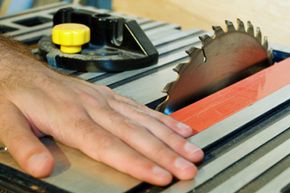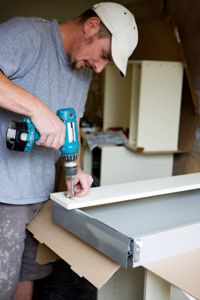"An ounce of prevention is worth a pound of cure." This famous saying from Benjamin Franklin can apply to both your health and safety, especially where tools are concerned. Tools make work easier, faster and even more precise. Yet, tools -- and power tools in particular -- can also cause injuries. A Hazard Screening Report by the U.S. Consumer Product Safety Commission estimated that in 2001 more than 418,000 emergency room-treated injuries were associated with power tools and workshop equipment [source:Marcy]. And a majority of these power tool-related injuries occur to men [sources:Sacchetti and Appy].
These injuries include both professionals and amateurs. Dr. Alfred Sacchetti, Chief of Emergency Services at Our Lady of Lourdes Medical Center in Camden, N.J., and spokesperson for the American College of Emergency Physicians estimates that weekend warriors make up about 70 percent of the power tool-related injuries he sees in the emergency room. It's important to note that workers might have company-sanctioned medical facilities or on-site doctors to deal with injuries [source:Jois-Bilowich].
Advertisement
Regardless of whether you're a pro or a do-it-yourselfer, there are some common injuries that can afflict you. In this article, we'll highlight some of those injuries, their causes and some tips for avoiding them. First, we'll look at lacerations and amputations, one of the most severe injury categories.




